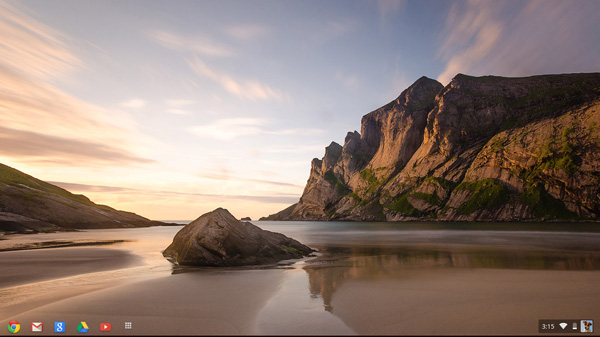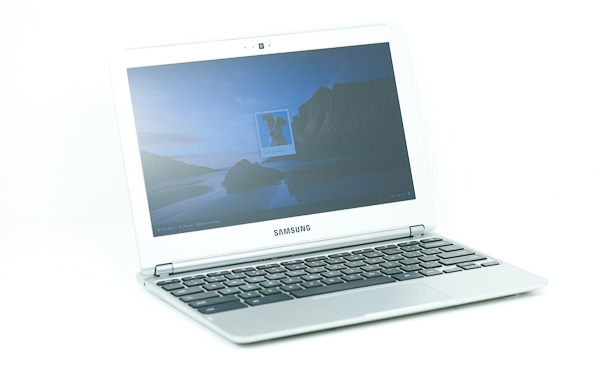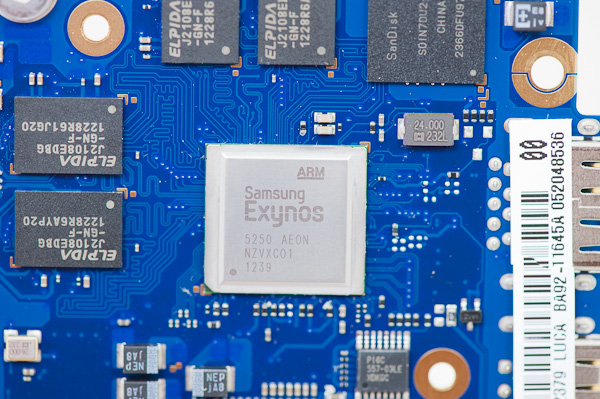Samsung Chromebook (XE303) Review: Testing ARM's Cortex A15
by Anand Lal Shimpi on October 31, 2012 9:00 AM ESTGoogle announced the Chrome OS project two years ago, and with it came the first Chromebook: the CR-48. The Chrome OS concept seemed revolutionary at the time. In 2010 we were well into the latest round of questioning whether today's PCs were fast enough. The Ultrabook revolution hadn't yet begun, and the iPad was starting to gain momentum. Capitalizing on the market being flooded with poor quality, yet affordable PC notebooks that still struggled with the same virus/malware issues they'd been facing for years, Google took the opportunity to attempt to revolutionize the PC OS.
Chrome OS was that attempt at a revolution. As an OS built around a web browser, Chrome OS offered many of the advantages that the Chrome browser itself brought to the table: sandboxing, guest mode and constant/painless updates. All user data is encrypted on the drive by default. Security was and remains a major feature of Chrome OS.
Google's revolution extended to hardware as well. The Cr-48 notebook delivered a good keyboard, trackpad and solid state storage. Future Chromebooks would do the same. While the price points of these machines (<$500) kept ultra high resolution IPS displays out of the bill of materials, Google promised good build quality and solid state storage - two things you couldn't find in cheap notebooks of the time.
Since then, some of the traditional PC makers have woken up. Although confined to the $999+ price point, we're finally seeing attention paid to build quality, display quality and storage performance. Over the next couple of years there's going to be increased focus on bringing those premium features down to sub $700 price points.
For Chrome OS and Google's Chromebooks to remain relevant, they also had to move down the pricing stack. With its most recent announcement, Google has done just that. The new Chromebook (Samsung XE303C12) is priced at $249, while maintaining much of what made its predecessors interesting.
Even more interesting than its aggressive price point is the choice of SoC inside Google's new Chromebook: Samsung's Exynos 5 Dual, featuring two ARM Cortex A15 CPU cores. This move makes the new Chromebook the very first non-x86 machine to ship with Chrome OS. Given that I also happen to have a dual-core Atom based Chromebook from 2011, the new Exynos 5 based machine gave me a unique opportunity to get a preview of how ARM's next-generation CPU core would stack up against Atom.













149 Comments
View All Comments
superflex - Wednesday, October 31, 2012 - link
Way to use the crappiest pictures of the display you could wrestle up.If the display is on par with other 768 TN panels used in laptops reviewed by AT, why did you use those washed out pictures of the display? I don't see the same lack of photography skills when reviewing other laptops with similar panels.
I guess since Google isn't stroking AT the same way Apple does, a fair review with fair pictures would be pointless.
Hacks!
PsychoPif - Wednesday, October 31, 2012 - link
Why would you base your opinion on a picture when they provide numerics to back up the review?Since I learned about Photoshop, I no longuer believe what I see on a picture anyway.
superflex - Wednesday, October 31, 2012 - link
Ever hear the phrase "A picture says a thousand words"?For the casual viewer, who may not delve into the display numbers, the pictures certainly do tell a story. It just depends on what story AT wants to tell.
superflex - Wednesday, October 31, 2012 - link
Look at the review of the Dell XPS 14Z. According to the numbers in this review, the panel in the Sammy CB is on par, if not better than the one used by Dell. Look at the pictures of the Dell display vs the CB display. Are they on par with one another?You can certainly influence a consumers purchasing decision based on some sub-par photographs.
Well done AT.
PeteH - Wednesday, October 31, 2012 - link
Do you really think the people technologically sophisticated enough to be interested in an AnandTech review are the same people who would base their purchasing decision on one photograph of a display?superflex - Wednesday, October 31, 2012 - link
Do you really think nobody will do a Google search for "Samsung Chromebook Review" and find AT's site on the list?I guess Google is smart enough to know a persons IQ and direct them away from AT and its "sophisticated" readers.
Sheeesh, get over yourself.
PeteH - Wednesday, October 31, 2012 - link
Seriously? Just start reading the review, it is clearly not targeted at consumers. Heck, there's a photo of a circuit board on the first page! There's a tear down of the device (complete with photos) before the display is even discussed! Who is going to read this review other than people who care deeply about the technical aspects of the Chromebook?But I'm starting to think you know that, and the real reason you're upset is because AnandTech pointed out that the Chromebook has a crappy display.
SND_ - Wednesday, October 31, 2012 - link
Most likely the Chromebook doesn't have a very good display AND the picture sucks.I did notice that the display looks very poor in that image. I doubt it's that bad (two feet in front of you). . . typing "Chromebook" into Google will fetch you better pictures of suggesting a display of higher quality.
LogOver - Wednesday, October 31, 2012 - link
I would like to see a comparison with the Celeron-based Chromebookkrumme - Wednesday, October 31, 2012 - link
Celleron is a different price segment.The comparison was perfect and valid imho.